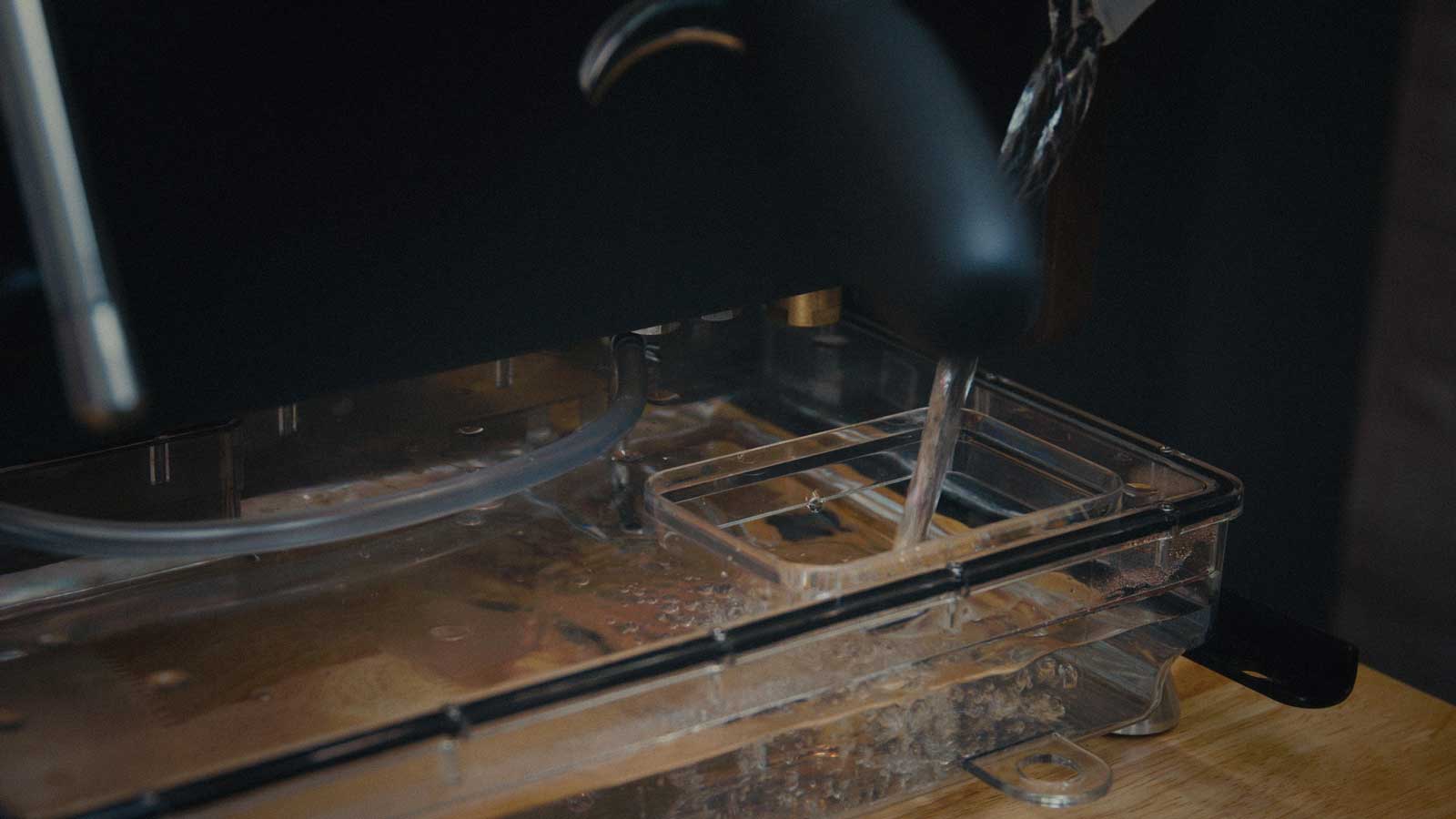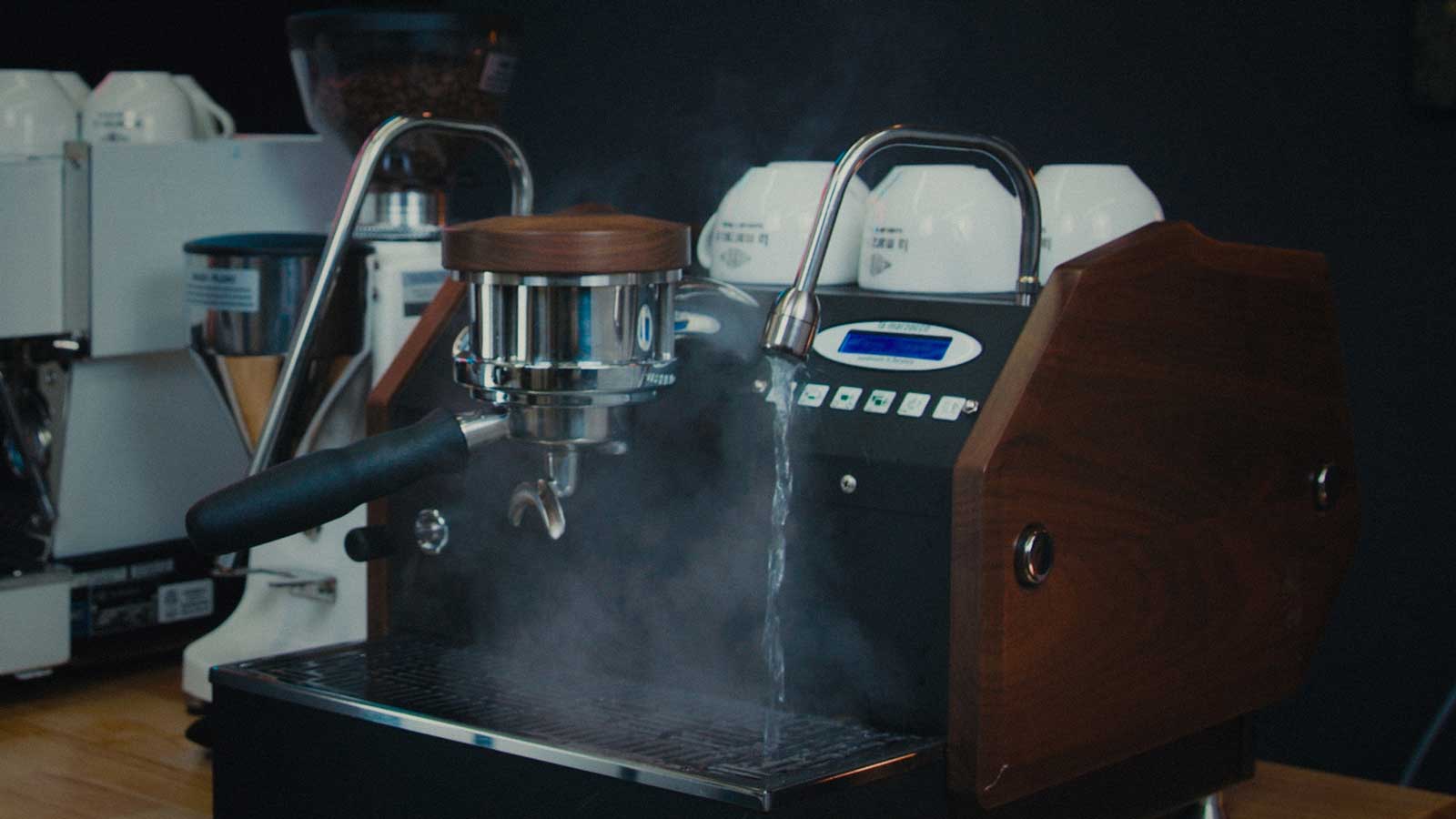water solutions for your espresso machine

before your first cup, test the water
When it comes to espresso, water quality is crucial, and not only to how good your coffee will taste. The wrong water could cause your machine to breakdown, lead to higher maintenance costs, and shorten its lifespan.
What is “the wrong water”? Well, it comes down to its mineral content and chemistry, which can vary massively depending on your location and water source. Generally, mains supply water in New Zealand is 100% safe to drink, and tastes pretty good, but that alone doesn’t make it ok to use in your espresso machine.
Water with too much mineral content is very likely to deposit limescale, which will inevitably cause problems – usually a blockage, and probably a repair bill.
At the other end of the spectrum, water with low mineral content, low pH, or high chloride content can be so corrosive (at high temperature and pressure) that it rapidly degrades components inside the machine. Water that is very pure, like distilled or rainwater, has this corrosive effect, and sometimes won’t work with the machine’s sensors, in which case it won’t fill or heat up.
Surprisingly, even water from common drinking-water filters is often unsuitable, as they have little effect on the mineral content or underlying chemistry – happily, many espresso-machine-specific filtration and treatment products do exist, the key is choosing the right one for your particular source, which leads us to testing.
We recommend using the water testing kit that comes with your new La Marzocco before you use the machine. Visit our online Water Calculator to interpret the test results. Please don’t hesitate to contact us for help, we have many good water solutions, and we’re happy to guide you.
For optimum machine performance, the water properties should fall within the following parameters:
|
value
|
units
|
min.
|
max
|
|---|---|---|---|
|
T.D.S
|
ppm
|
90
|
150
|
|
Total Hardness
|
ppm
|
70
|
100
|
|
Total Iron
|
ppm
|
0.0
|
0.02
|
|
Free Chlorine
|
ppm
|
0.0
|
0.05
|
|
Total Chlorine
|
ppm
|
0.0
|
0.1
|
|
pH
|
6.5
|
8
|
|
|
Alkalinity
|
ppm
|
40
|
80
|
|
Chloride
|
ppm
|
0
|
30
|

water testing tips
Always use cold water from either the tap, filtration cartridge or bottle – do not test hot water or water from the machine.
Once you have tested the water, you can enter the results in the La Marzocco Water Calculator.
If you choose to use bottled water for your machine, check that the required minerals are present. Water with a low mineral count, or distilled water, will not be recognised or accepted by the machine causing the blue water light to flash even when the reservoir is full.
We also offer water testing at our Parnell showroom. Fill a clean bottle with the water you want to test and label it with your name and bring it in to our team to test for you.
bwt inline filter (connected directly to the mains water supply)
We sell BWT water treatment cartridges and heads, which are a high quality European product designed specifically for use with espresso machines. :
– Water optimisation for all hot and cold drinks
– Excellent protection against equipment corrosion
– Reliable prevention of stainless steel corrosion
– Protection against the most stubborn residues, e.g. gypsum
– Reduces maintenance costs to minimum levels
– Extends the life of the equipment
The Size S Bestprotect cartridge will treat 1,525 litres of water at 70ppm General Hardness.
Install Costs: Variable. The minimum required parts; cartridge head, pressure reducing valve, and connecting kit would be approximately $230 (labour, travel and the actual cartridge would be additional to this).
Plastic wastage: Low (although the cartridges are not yet easily recyclable in NZ, you only use one a year)
bottled water
Be sure to read the details on the bottle of the mineral content etc, and choose one that fits within the parameters recommended in the Linea Mini Manual. Some bottled waters will have far too much mineral content or be too acidic. Do not use distilled water though, its mineral content is so low that it may not be recognised by the Mini’s water level sensor.
Plastic Wastage: If the other options mentioned won’t work for you, we recommend boxed water in cardboard to avoid plastic wastage.